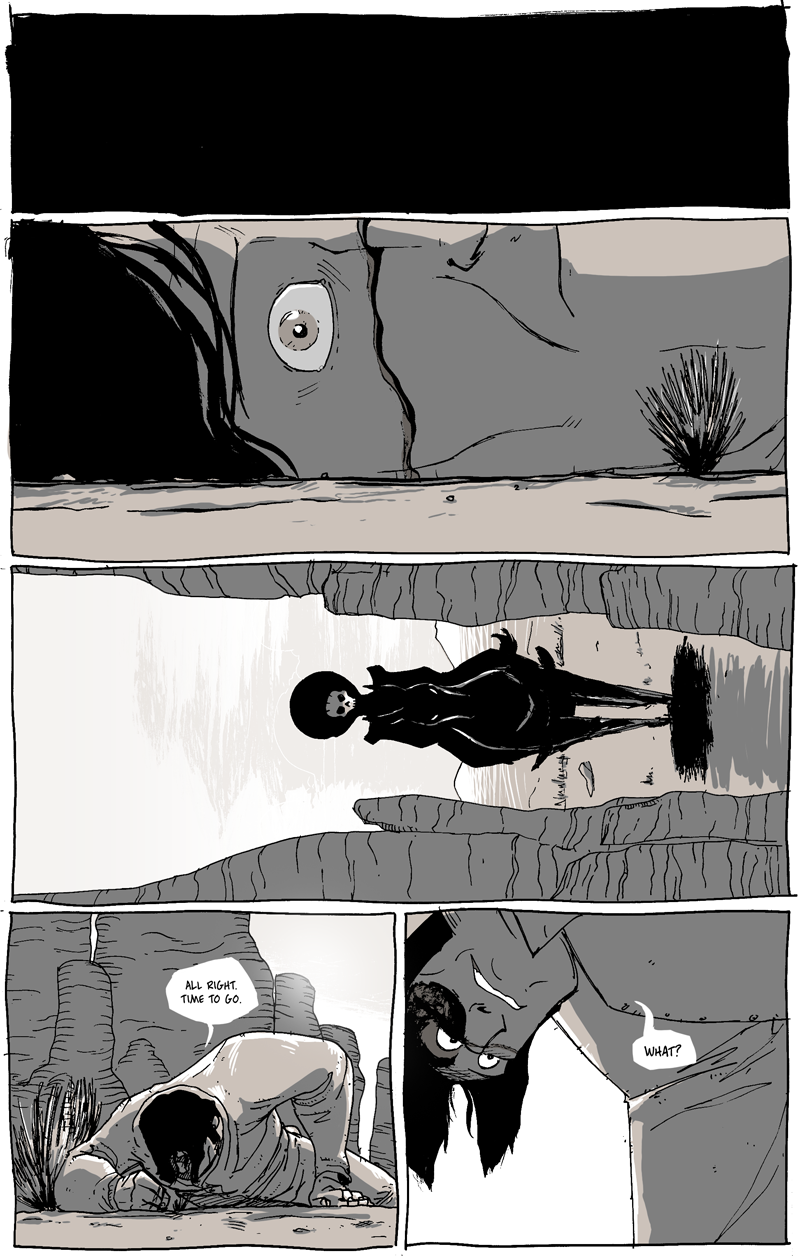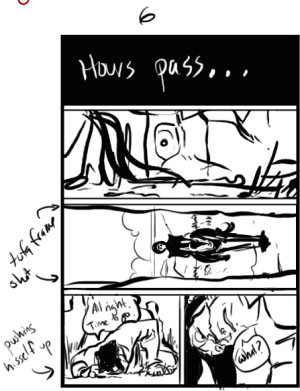Time to Go
Though there are many things I’m quite proud of in this opening scene, were I to prioritize a list I would say that playing with panels––from perspective to point of view, to layout––could be at the top. The scene is so nebulous, spooky, and sparse that it really left a lot of room for experimentation that kind of (in my eyes) has to be calmed down in later scenes when Long John is interacting with a larger cast in a more concrete (not literally) setting.
Interestingly, in the modern comics scene, a lot of mainstream titles have been playing with panel layout to such an extent as to actually force the reader to manipulate the comic in their hands to be able to follow the story. In the New 52 Batman––the only New 52 title I follow at this point, and that’s mostly because of Greg Capullo––the fifth issue of the first story arc, called “The Court of Owls,” Batman is being sadistically led through an underground maze and is being driven mad. Panels swirl around in spirals, twist around on a single page, or simply vary in orientation from page to page––all to get readers as frustrated as Batman, forcing them to literally turn the comic on its side to follow the spiral path, or to turn a page and turn the comic one way or another, trying to find the correct orientation. It was confusing, but that was the point, and it worked really well.
Trillium, a recent Vertigo mini-series by the prolific writer/artist Jeff Lemire, seemingly built its narrative around the idea of manipulating how the reader actually reads the comic. It’s a star-cross’d tale of two lovers separated by time and space. As the issues progress, they get closer and closer to meeting, and to echo that closing distance, layouts were experimented with each issue. In the first one, the book is divided in half by character, with one character’s progress read from front to the middle; to read the other’s half, you had to flip the book on its head and read from the “new” front to the middle, creating a narrative Möbius strip. It worked incredibly well and interesting variations were done in each subsequent issue.
I don’t plan on implementing anything that requires that much effort––some of you may be reading this on a computer monitor, after all––but if you have to turn your head to orient yourself to the new point of view, or lean in or lean back to see what’s going on, then realize it was probably on purpose (and for a purpose).
For fun, here’s the layouts I did for this page:
Also, for what it’s worth since her name won’t be mentioned for awhile in the narrative, the new character is named Hellrider Jackie and her development is older and just as storied as Long John’s. But I’ll save that for another day.




Discussion ¬